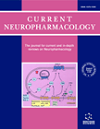
Full text loading...
COVID-19 is associated with neuropsychiatric symptoms, such as anosmia, anxiety, depression, stress-related reactions, and psychoses. The illness can cause persistent cognitive impairment and “brain fog”, suggesting chronic brain involvement. Clinical entities of ongoing symptomatic COVID-19 and Post COVID Syndrome (PCS) mainly present neuropsychiatric symptoms such as dysgeusia, headache, fatigue, anxiety, depression, sleep disturbances, and post-traumatic stress disorder. The pathophysiology of COVID-19-related brain damage is unclear, but it is linked to various mechanisms such as inflammation, oxidative stress, immune dysregulation, impaired glutamate homeostasis, glial and glymphatic damage, and hippocampal degeneration. Noteworthy is that the metabotropic receptor mGluR2 was discovered as a mechanism of internalisation of SARS-CoV-2 in Central Nervous System (CNS) cells. N-acetylcysteine (NAC) and acetyl-L-carnitine (ALC) are two supplements that have already been found effective in treating psychiatric conditions. Furthermore, NAC showed evidence in relieving cognitive symptomatology in PCS, and ALC was found effective in treating depressive symptomatology of PCS. The overlapping effects on the glutamatergic system of ALC and NAC could help treat COVID-19 psychiatric symptoms and PCS, acting through different mechanisms on the xc-mGluR2 network, with potentially synergistic effects on chronic pain and neuro-astrocyte protection. This paper aims to summarise the current evidence on the potential therapeutic role of NAC and ALC, providing an overview of the underlying molecular mechanisms and pathophysiology. It proposes a pathophysiological model explaining the effectiveness of NAC and ALC in treating COVID-19-related neuropsychiatric symptoms.

Article metrics loading...

Full text loading...
References


Data & Media loading...

